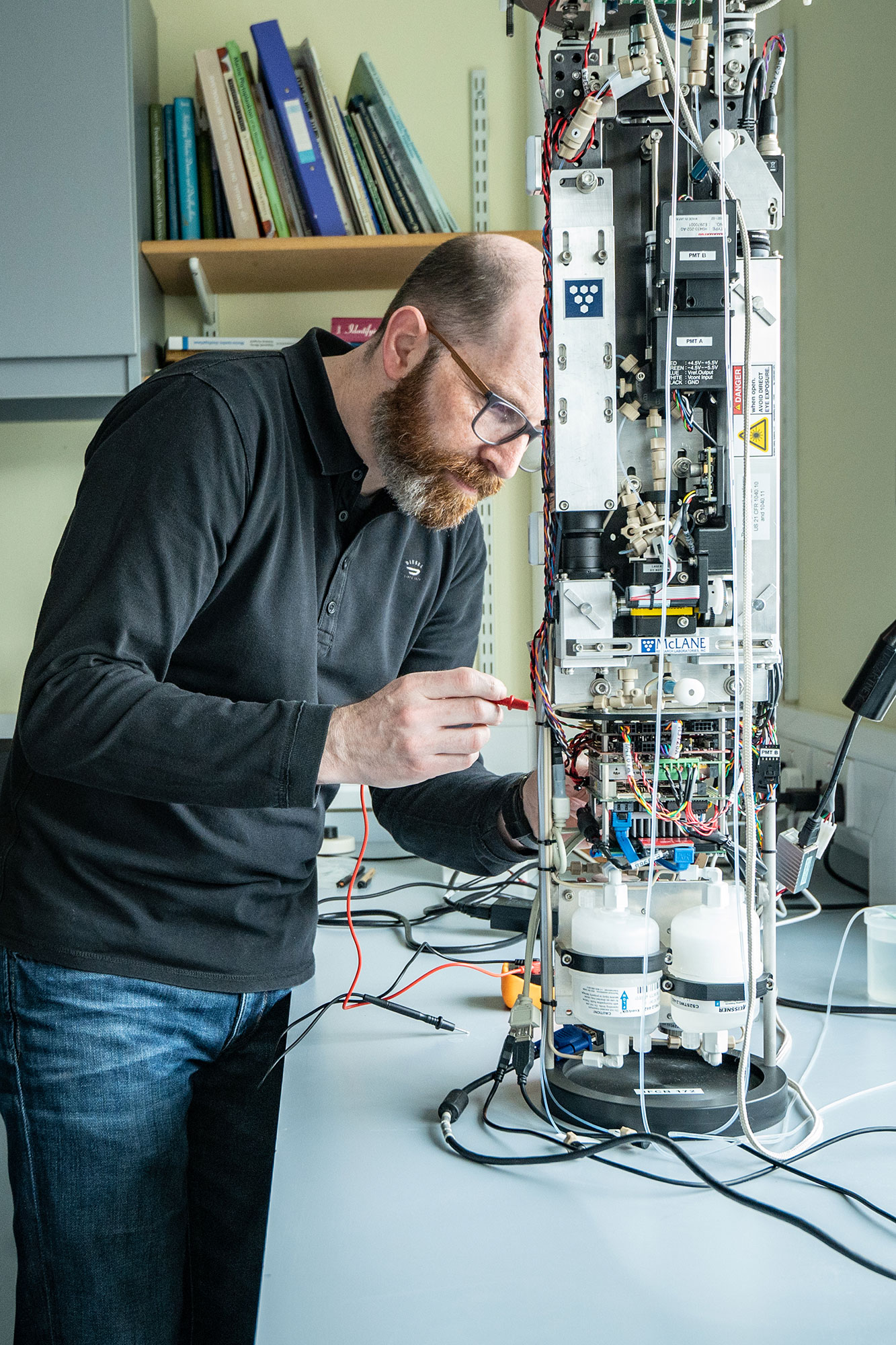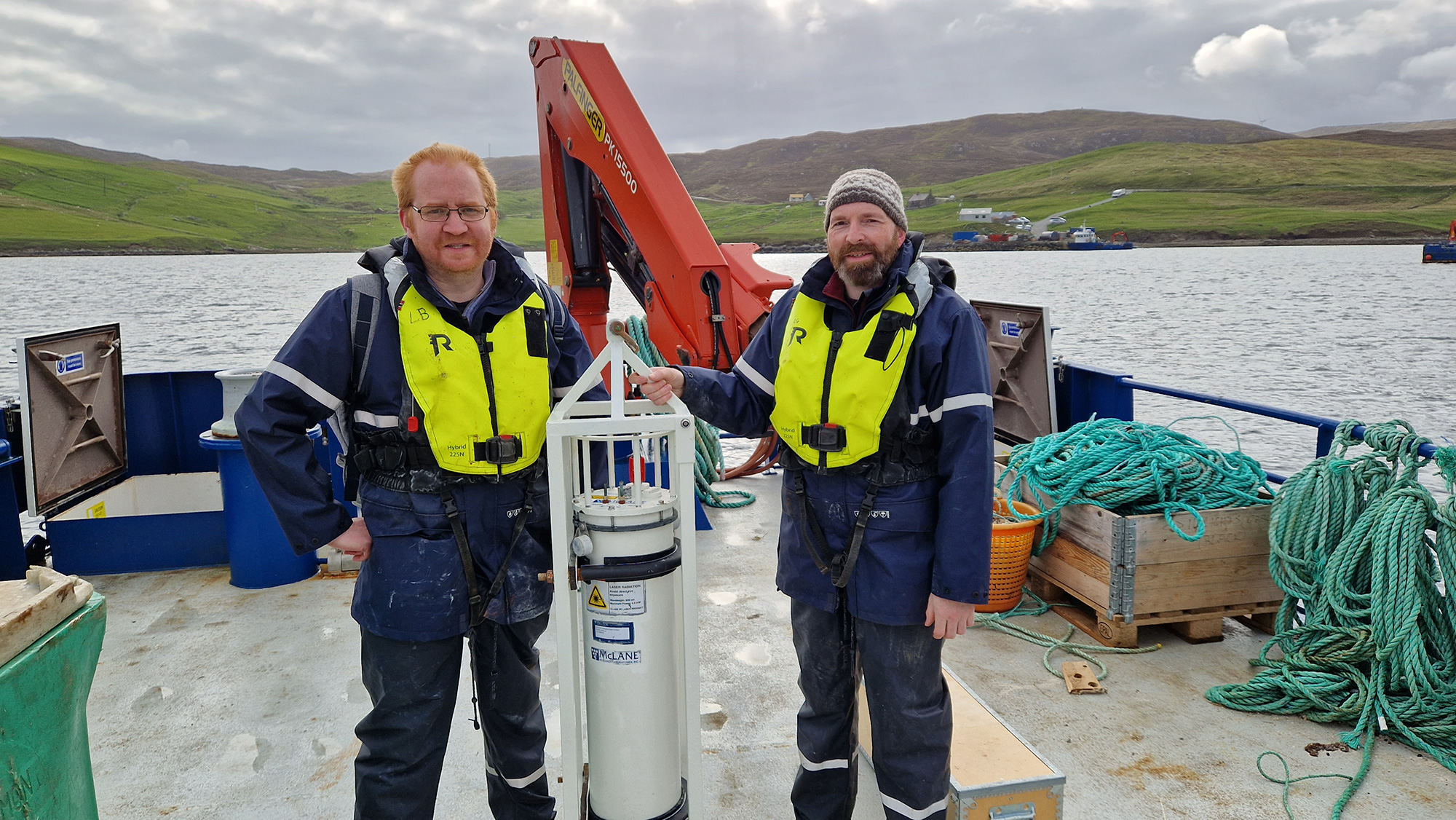Virtual taxonomist in training to protect fish farms from toxic algal blooms
A hi-tech underwater device that scans water samples for potentially dangerous algae blooms – the first of its type to be deployed in UK waters – has been operational for over a year at a Scottish Sea Farms site in Shetland.
The Imaging FlowCytobot (IFCB) uses a combination of lasers and cameras to detect and photograph microscopic, single-celled phytoplankton in the water, before uploading data for specialist analysis, detection and monitoring.
While phytoplankton are a critical part of the ocean ecosystem, some species can reproduce, or ‘bloom’, to toxic levels. Humans eating shellfish that have absorbed these toxic phytoplankton can become ill and blooms can also be fatal to farmed fish. Early warning of such phytoplankton blooms is therefore crucial to the aquaculture industry.
The IFCB was deployed by a research team from UHI partners Scottish Association for Marine Science (SAMS) and UHI Shetland, with help from Scottish Sea Farms, which operates the Cole Deep fish farm in Shetland. It is the first time that an IFCB has been deployed at a working fish farm anywhere in Europe.
The research team is using artificial intelligence to train the system to identify different species of phytoplankton at the farm.
Human taxonomists developed an algorithm to help the instrument identify phytoplankton species. Results are almost instant, compared with traditional methods that can take days to process, from collection of a sample to the identification of potentially harmful algae. The process gives farm managers near real-time information on the types of phytoplankton in the waters surrounding their site.
Since entering the water at Cole Deep in spring 2023, the IFCB has photographed phytoplankton around the clock at 20-minute intervals and has already identified trends in the presence of phytoplankton from more than 38 million images taken so far. Thanks to funding from the Sustainable Aquaculture Innovation Centre (SAIC), researchers hope IFCB observations will help them to better understand seasonal trends in harmful phytoplankton blooms.
Project leader Prof Keith Davidson of SAMS said: “It is notoriously difficult to predict when an algal bloom will occur, given the various environmental factors involved in its formation. The more warning we can give fish and shellfish farmers, the better the chance they have of mitigating the impact.
“With the IFCB, we have a virtual taxonomist on duty around the clock, identifying potential risks before a scientist has even looked down a microscope.
“It’s already showing us rapid changes over the courses of a day that we’ve never seen before. Traditional sampling methods use fixatives to preserve the sample for analysis but that can damage the cell. Being able to see live samples shows us the structure of the cell as it’s meant to be.”

Gregg Arthur, aquaculture knowledge exchange officer at UHI Shetland said: “Deployment of this IFCB device builds on a previous project with Seafood Shetland that was supported by the Shetland Islands Council Coastal Communities Fund. We are excited to learn more about the phytoplankton communities around fish farms, especially when successful aquaculture relies upon understanding our interactions with the natural environment. These devices provide a step-change in our capability and knowledge in the areas where they are deployed as well as an exciting use of AI.”
Scottish Sea Farms Head of Fish Health & Welfare Dr Ralph Bickerdike said: “Already, we’ve been able to glean invaluable information on the real-time composition of harmful algae – information that simply wasn’t available before the IFCB – affording us the opportunity to deploy mitigation measures in the event of a bloom and safeguard the wellbeing of our salmon.”
SAMS PhD student Gary Groves is developing the AI capability of the IFCB to improve its identification abilities. His work is funded by The Data Lab and the Scottish Government’s Marine Directorate.
